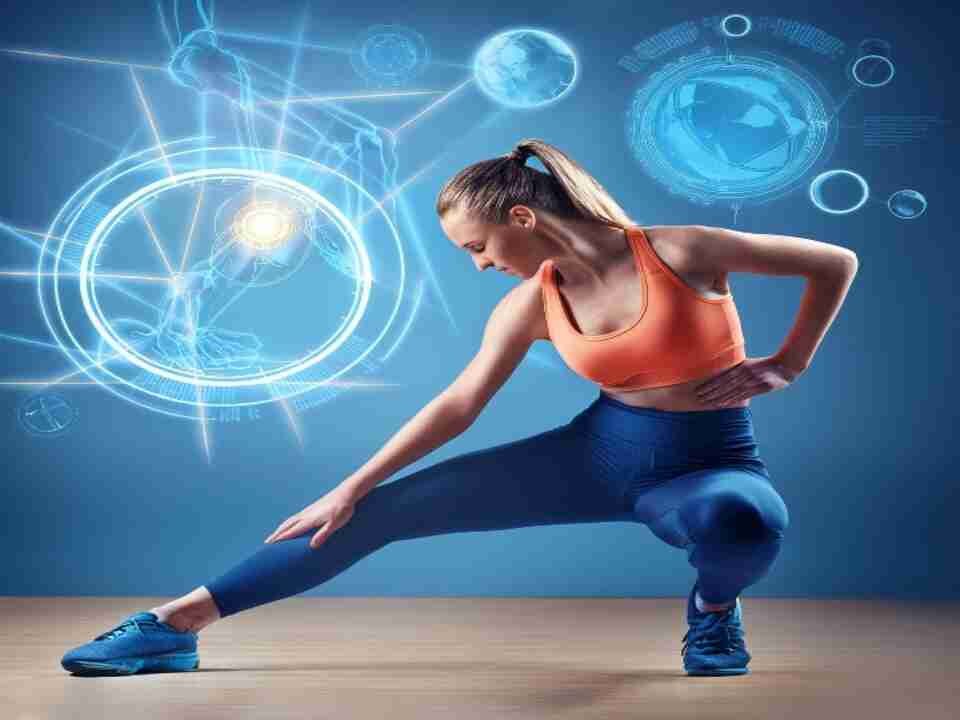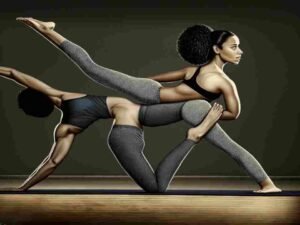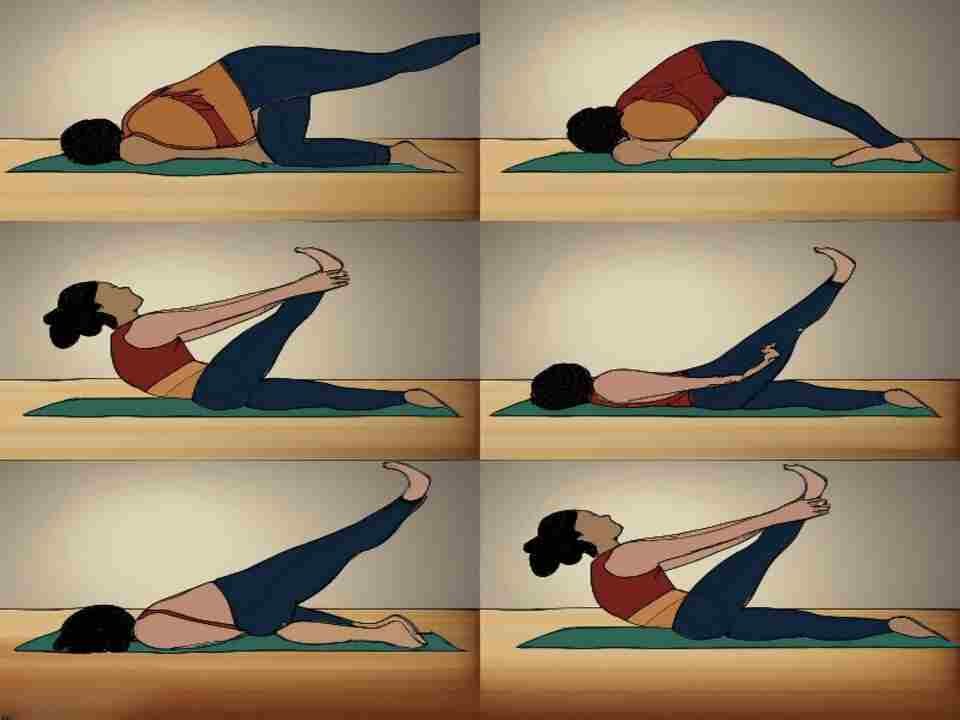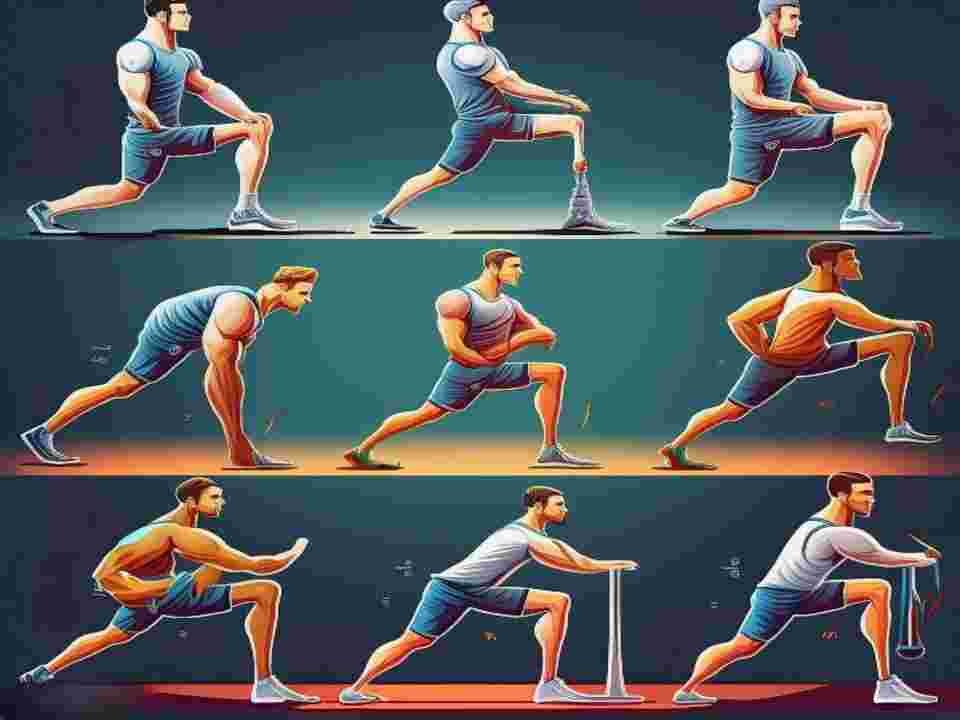Introduction
Leg workout Machines for Home are one of the most difficult and important routines to incorporate into your fitness plan if you want a stronger, more stable lower body.
This helps with day-to-day activities, making you a better athlete, and preventing injuries as home gyms’ demand and popularity increase.
You might want to search for Leg Workout Machines For Home that can act as fine shortcuts, but it provides you with a workout station at your place. I will also cover the 7 best portable home gym leg machines.
1. Leg Workout Machines for Home Gym
Description
The home gym leg workout machines for home press machines is a full-fledged and versatile piece of equipment that helps in delivering an extensive lower body workout.
This machine is often much smaller than a gym and, as such, can be easily stored in the home. It has adjustable weights and seating positions to ensure it will work for everyone who uses it regardless of their fitness level.
Key Points
Leg press The leg workout machines for home are great for isolating the quadriceps, hamstrings, and glutes, and working them through a full range of motion.
Strengths:
My husband did more intensive strength training and his legs never hurt either.
Adjustable:
Appropriate for all fitness levels as they are adjustable.
Benefits
The leg workout machines for home are perfect for targeting large muscle groups in the legs, namely quadriceps muscles.
With its structure, you can perform your exercises securely and more effectively reducing the harm of any dangerous event that may occur while exercising.
On top of that, it is also adjustable so you can add more weight when you get stronger and this will make a great option for the long term too.
Key Takeaways
Anyone looking to gain muscle should be in strength training.
- Safety:
- Slight to no injury risk with correct use.
- Adjustability:
- can change to suit your level and goals.
Example Exercise: Leg Workout Machines for Home Press
Starting Position:
Start by sitting on the leg workout machines for home with your back against the seat and place your feet shoulder-width apart on the platform.
Actions:
Push the platform as far away from you, extending your legs barely short of locked. Then, little by little, return to your initial position.
Sets: 3- Repetitions: 12-15 reps per set.
2. Leg Workout Machines for Home Exercises for Seniors
Description
The leg exercises for seniors give low-impact exercises and lightweight leg workout machines for home that will have the elderly family up & moving.
These machines typically have attachments such as pedals or mini steppers that they can use while sitting and are perfect for the elderly, sick, or those with mobility problems.
Key Points
Improve Blood Circulation:
Seniors must enhance their blood circulation and these exercisers help improve the flow of oxygenated blood.
Portability:
They are lightweight and compact and hence can be used anywhere you like;
Mobility improvement:
If used regularly, leg strength and mobility can increase greatly.
Benefits
Maintaining leg workout machines for home strength and overall mobility in seniors, these machines are great. An excellent manner to help your elders exercise without causing a lot of strain on the joints and is secure.
Key Takeaways
Keeps Seniors Independent:
Strong legs make it easier for seniors to remain independent.
Safety:
Low impact so you won’t get injured
Versatility:
Very convenient to use and store, ideal for home applications.
Seated Peddler Workout example
Step-By-Step:
Put The Pedal Exerciser Right On the Floor In Front Of A Chair.
Sweating Level:
You will not sweat Movement: Sit and steady the pedal
Time: 15-20 minutes rolling hills
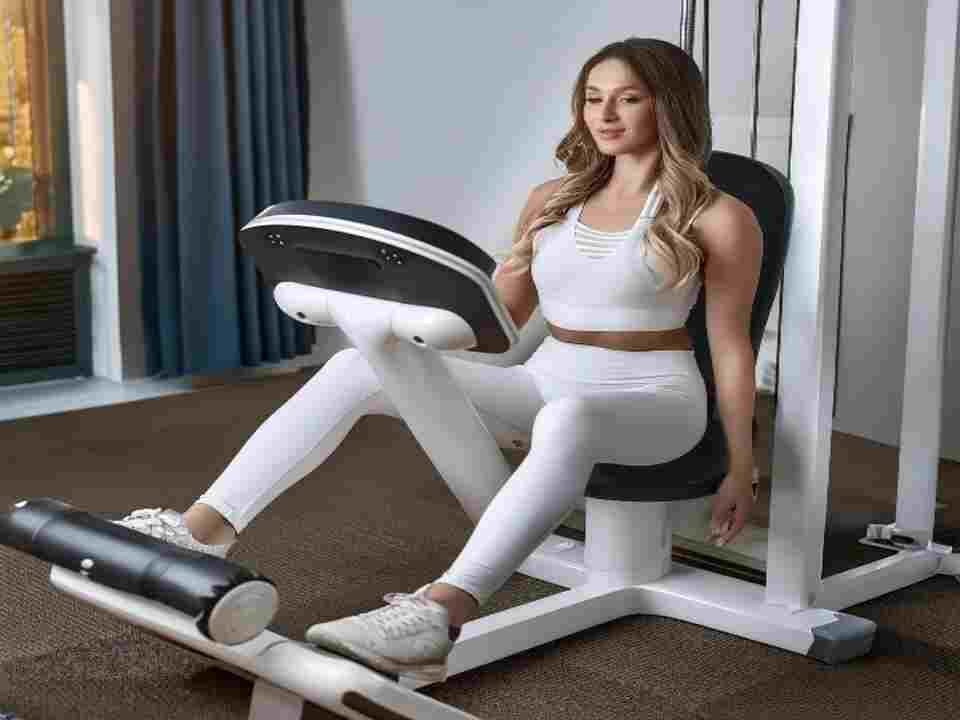
3. Olympic Weight Bench Home Gym:
Compact Leg Extension and Curl Machine The Olympic Weight Bench Home Gym compact leg extension is a convenient and reliable exercise tool that can be used for overall bodybuilding or other types of exercises.
Description
This 2-in-1 machine will mimic bodyweight leg extensions and curls. With its small footprint, this pulley setup is great for at-home gyms without extra space. It will give you a solid leg workout machines for home with focused isolation of the muscles in your legs.
Key Points
Your Quadriceps As Praised to the Heavens:
Target quadriceps, hamstrings, and calves.
Resistance Level Adjustment:
With a super easy Spin adjustment system that can be made from your hold BracketAccess
Workouts:
Focused Workouts on your legs.
Benefits
The leg extension and curl machines are great because they allow you to isolate parts of your legs for more focused work (like quads with leg extensions, or hams/glutes with prone curls) Essentially, this leg workout machine for home allows you to do exercises specific to quadriceps and hamstring muscle development so it is extremely helpful when trying to bring out the shape in those.
Key Takeaways
Muscle Isolation:
Ideal for targeting & working specific muscles
Flexibility:
Improves efficiency, flexibility, and muscle tone.
Small Footprint:
Perfect for a compact home gym.
Example Exercises with Complete Leg Workout Machines for Home
Leg Extension:
Setup:
Sit on the perfect leg workout machines for home with your knees bent and place your feet under the padded lever.
Range of Motion:
Extend your knees until fully extended, and then flex them again to the starting position.
Sets: 3 | Reps: 12-15
Leg Curl:
Setup:
Lie face-down on a bench and attach your lower legs under the foot pad.
Move:
Bring your legs up to your butt and then back down.
Sets: 3 Reps: 12-15
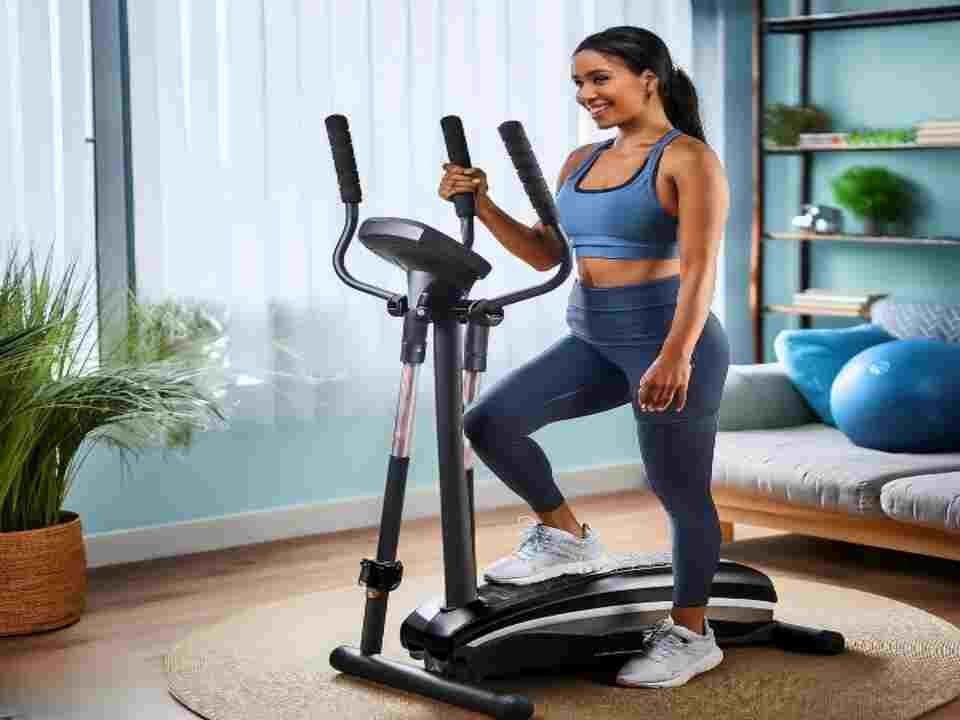
4. Mini Elliptical Leg Workout Machines for Home
Description
Small elliptical trainers are low-impact cardiovascular machines. This makes it an excellent choice to have at home, as you can use the device while even sitting down.
Key Points
Engage Multiple Muscles:
Targets calves, thighs, hip flexors, and glutes.
Cardiovascular Benefits:
It also gives you a good cardio workout.
Resistance:
Adjustable resistance settings to tailor your workout.
Benefits
For people who are interested in including some cardio workouts, this mini elliptical leg workout machines for home works best since it does not add unwanted stress to your joints.
This is ideal for people who have small spaces at home or can use it when watching their favorite show, while sitting in class, and so on.
Key Takeaways
Portability:
Great for home offices and small spaces.
1. Quick Workouts:
The perfect way to slip in a quick workout during the day!
Low-Impact:
Tough on the muscles, easy on the joints.
Example Workout:
Seated Elliptical
Setup:
Place the mini-elliptical in front of a chair.
Movement:
Sit and pedal at a moderate speed
Time Duration:
20-30 minutes of continuous pedaling.
5. Adjustable Squat Rack
Description
A squat rack can be a stand or it could essentially refer to the area where barbells are put for accomplishing diverse workouts like squats.
It frequently includes a vertical height change and wellbeing side rails to sleek the lifter, this also provides help as well as more safety with higher lifts.
Key Points
Heavy Lifter:
Perfect for people who perform heavy lifts.
Automated spotter arms for squats, bench presses, etc.
Safety Features:
Safety bars help prevent injury.
Benefits
This thing of Leg Strengthening and Core Stability is great for this adjustable squat rack to be correct! Its customization characteristics and safety precautions win the tool extra points when it comes to training!
Key Takeaways
Advanced Workout:
Needed for any advanced leg day workouts.
Safety:
Gives confidence in your lifts and stabilizes them as well;
Exercise Example:
Barbell Squat
Set-Up:
Adjust the squat rack so that you can place a barbell on it.
Actions:
Place a barbell across the back of your shoulders, squat down until your thighs are parallel to the floor; and return to start.
Sets: 3 Reps: 10-12

6. Seated Calf Raise Machine
Description: A leg workout machines for home designed explicitly for calf-raising exercises. It has adjustable resistance and seating positions.
Key points:
• Isolates the calf muscles:
Its main objective is to raise the strength of the calf muscles.
• Reduces back strain:
The seating position significantly hampers strain on the back.
• All levels:
Its adjustable settings make it ideal for users at all levels.
Benefits:
The machine is ideal for helping you with your calf muscles by isolating them. This ensures that your back does not strain itself and injures and is easily available to all users.
Key Takeaways:
• Lower leg strength
• Aesthetics
• Ease of use
Example Exercise: Seated Calf Raise
• Setup:
You have to sit on the machine with your knees under the padded lever and your feet on the footplate.
• Movement:
Raise your heels as high as possible and then take them back to the starting position.
• Repetitions:
3 sets of 15-20 reps.
7. Resistance Band Set
Description:
This is a set of bands that come in differing strengths that are suitable for use while training your legs; they offer significant portability.
Key points:
• Versatile:
Perfect for many leg exercises.
• Portability
• Strength training
Benefits:
These bands are incredibly diverse, and you can use them for a variety of exercises throughout your legs. The cost is relatively cheap, and they offer too much flexibility for a wide range of users.
Key Takeaways:
• Affordable
Convenience:
Easy to carry and store.
Versatility:
Works for novices as well as experts.
Exercise Example: Resistance Band Squats
How to:
Stand with your feet shoulder-width apart in the center of a resistance band, holding onto both handles and positioning them at shoulder height.
Squat keeps the tension in the resistance band and returns to the starting position.
Sets and Reps: 3 x 12-15
Key Points Summary Table
| Machine Type | Targeted Muscles | Key Benefits | Suitable For |
|---|---|---|---|
| Home Gym Leg Press Machine | Quadriceps, Hamstrings, Glutes | Full range of motion and muscle-building | All fitness levels |
| Leg Exerciser for Seniors | Entire lower body | Promotes mobility, easy to use | Seniors |
| Leg Extension and Curl Machine | Quadriceps, Hamstrings, Calves | Isolates muscle groups, adjustable resistance | Focused muscle workout |
| Mini Elliptical Machine | Multiple leg muscles | Cardiovascular workout, portable | Home offices and small spaces |
| Adjustable Squat Rack | Quadriceps, Hamstrings, Glutes | Heavy lifting, core strength | Advanced workouts |
| Seated Calf Raise Machine | Calf muscles | Isolates calves, reduces back strain | All fitness levels |
| Resistance Bands Set | Various leg muscles | Versatile, portable | All fitness levels, travel |

How To Look Leg Workout Machines for Home?
1. Assess Your Space
Learn how to buy the right leg workout machines for home before buying any equipment and measure your place to install the product.
Make sure there is enough space not only for the machine but also for you to move sufficiently during movements.
2. Define Your Fitness Goals
Think about what you need your leg workout machines for home. Do you want to gain muscle, move better, or increase your cardio-respiratory power? As each method has its strengths and weaknesses, you need to decide which targeted solo ads work for the biz opp that you are promoting.
3. Adjustability and Versatility
ConclusionElliptical trainers can be expensive so research manufacturers and models that offer added features like adjustable resistance or more ways to exercise before you buy.
This versatility allows the equipment to adjust with your increasing fitness level, as well as allow you to perform a series of exercises that target various muscles.
4. Check Weight Capacity
Check the maximum weight limit for you and perhaps any additional weights that you plan to use. This is especially true of pieces like the leg press or squat racks that are meant to carry systemic weight.
5. Test Strength and Durability
Price: Buy quality-made, durable machines. Make sure to read reviews and ratings for feedback on how long they last.
A well-built machine will make for a safer and more productive exercise routine as you go through the sets. Stick with me, this is going somewhere important….
6. Prioritize Safety Features
When it comes to equipment, ensure that they have locking mechanisms in place along with safety bars and non-slip tops whenever possible. This is very important, especially with heavy exercises to avoid injuries.
7. Consider Ease of Use
Opt for machines that are simple to set up and operate You simply will not use them enough if a machine is complicated to work with or the settings are more challenging than tying your shoelaces!
8. Portability and Storage Options
If your space is limited or if you need to transport the equipment regularly, think about how it will be transported. Resistant bands or mini elliptical machines are options that you can use to store safely when not in use since they go from being folded.
9. Review and Ask for Recommendations
Check the online reviews, and feedback of friends and fitness enthusiasts or trainers before making a purchase. Leg workout machines for home performance and reliability can be discovered through real-world use
10. Compare Prices and Warranties
Whether you’re in the market for one or two, it’s good to see how prices compare, so consider shopping around and finding some great bargains on soappond.com.
Additionally, make sure that the manufacturer doesn’t come with a warranty or return policy. A strong warranty can give you peace of mind and safeguard your purchase.
Remember to utilize these tips and you will not make a bad decision when purchasing the best leg workout machines for home that meet your needs.
Conclusion
Adding some leg day workout equipment to your home gym setup can significantly boost the strength of those legs with only a few movements.
From sophisticated gear, such as the home gym leg press machine, to a more minimal approach with resistance bands – there is something for everyone.
Picking the right gear for your fitness goals, available room and budget is essential in creating an efficient workout program on your home path.
Invest in these top 7 best home leg workout machines so that you have the essentials for getting fit, strong legs as well a boon to your health and life.
FAQs
1. What are the Best Leg Workout Machines for Home?
When it comes to leg workout machines for home use, consider the following options: Home Gym Leg Press Machine Leg Exercisers For SeniorsCompact Leg Extension And Curl Mini Elliptical machineAdjustable squat rack Seated Calf Raise Machine Resistance Bands Set
2. Read also: Do leg exercisers for seniors work?
Foot circulation machines for seniors, as we already mentioned prior, are specifically engineered to provide low-impact workouts that can help elders improve mobility and enhance blood flow.
3. The idea of a home Gym Leg Workout Machines for home Muscle Building?
Absolutely! Acapulco chair A home gym leg press machine is perfect for strength training and it will allow you to develop the size as well as shape of your quadriceps, hamstrings, and glutes.
4. How much room do these leg workout machines for home need?
The result will depend on the machine and how much space it needs to make. Good news for your current homebound to help you squeeze a bit of exercise into your space:
some options are more compact (the mini elliptical machine, resistance band set) and require less room, while others, like the home gym leg press machine or adjustable squat rack, require much more.
5. Do resistance bands work on leg workout machines for home?
Stand up tall: Yes, you can grow with resistance bands!!! They are versatile and portable, allowing you to perform many exercises targeting various muscle groups.
6. What leg workout machines are for home exercise?
Look for small kinds of equipment, like the mini elliptical machine, leg exercisers for seniors, and resistance band sets that are designed to be stored easily.
7. Are these machines suitable for beginners?
Well, the majority of these machines have adjustable settings so both beginners as well as advanced users can use them. Begin with low resistance and increase the resistance as strength improves.



